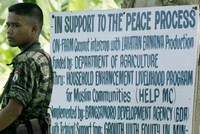A large part of ending civil wars and insurgencies is about finding new political solutions to old political conflicts. One such political solution and instrument has at times been to convert armed groups into political parties. Convincing former warring parties to enter formalized democratic politics is not an easy task however, and even when armed groups transform into political parties, the challenges for long-term democracy continue.
Research related to the political integration or reintegration of armed groups has been quite extensive. But political integration of armed groups is only one facet of a larger question about political integration of various entities after war. This larger question concerns not only armed groups, but also the political integration of former members of the military elite, as well as the political and democratic role of former rank-and-file combatants. Importantly, the challenges, justifications and explanations for successful outcomes within these categories are not interchangeable, even if the processes relate to and impact on each other.
Political reintegration in the aftermath of war should therefore be divided into three areas: first, the transformation of the military elite into a political elite; second, the transformation of armed groups into political parties; and third, the transformation of individual rank-and-file combatants into citizens. Underlying all of these outcomes is the idea that each set of actors should operate in a democratic fashion and embrace democratic norms. Often this last leg is the main challenge, as former combatants and commanders and the new political parties may become politically functional but not necessarily democratically functional.

